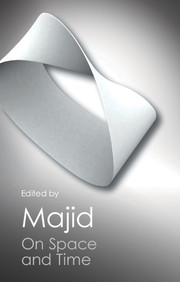2 - Quantum spacetime and physical reality
Published online by Cambridge University Press: 05 March 2014
Summary
INTRODUCTION
Whereas the previous chapter tells us about mysteries surrounding the physical structure of the Universe from a largely observational point of view, in this essay I will approach the problem of space and time from a theoretical point of view. This is about the conceptual structure of physics, why in fact our current concepts of space and time are fundamentally flawed and how they might be improved. I will explain in detail why I think that spacetime is fundamentally not a smooth continuum at the pre-subatomic level due to quantum-gravity effects and why a better although still not final picture is one where there are no points, where everything is done by algebra much as in quantum mechanics, what I therefore call ‘quantum spacetime’.
The idea of ‘moving around’ in space in this theory is replaced by ‘quantum symmetry’ and I shall need to explain this to the reader. Symmetry is the deepest of all notions in mathematics and what emerged in the last two decades is that this very concept is really part of something even more fundamental. Indeed, these quantum symmetries not only generalise our usual notion of symmetry but have a deep self-duality in their very definition in which the role of the composition of symmetry transformations and a new structure called a ‘coproduct’ is itself symmetric. For our purposes, quantum symmetries are needed in order to extend Einstein's theory of Special Relativity to quantum spacetimes.
- Type
- Chapter
- Information
- On Space and Time , pp. 56 - 140Publisher: Cambridge University PressPrint publication year: 2012
- 1
- Cited by

